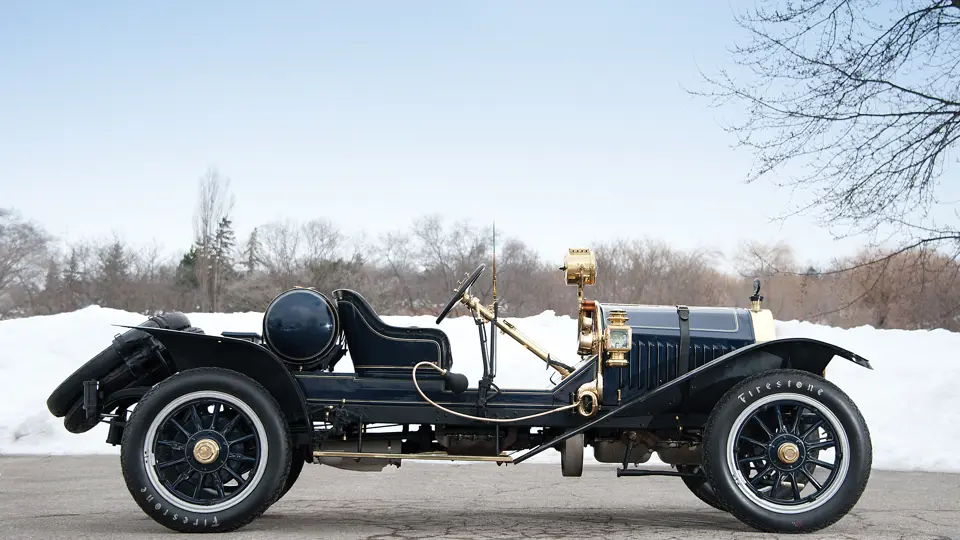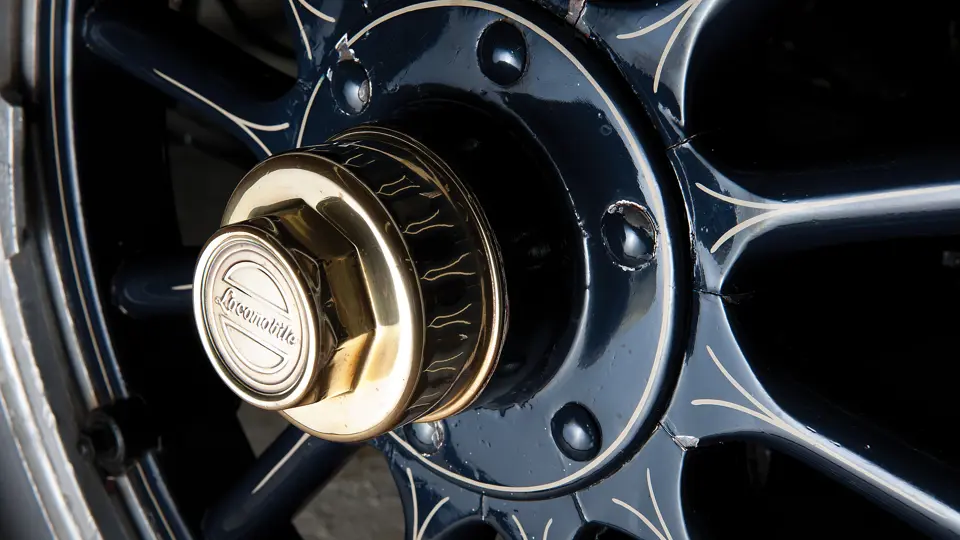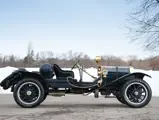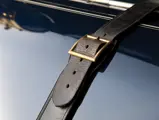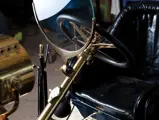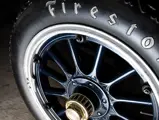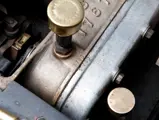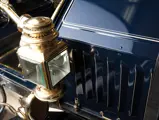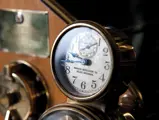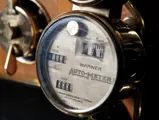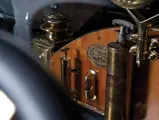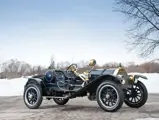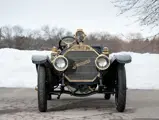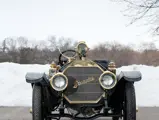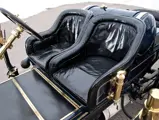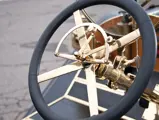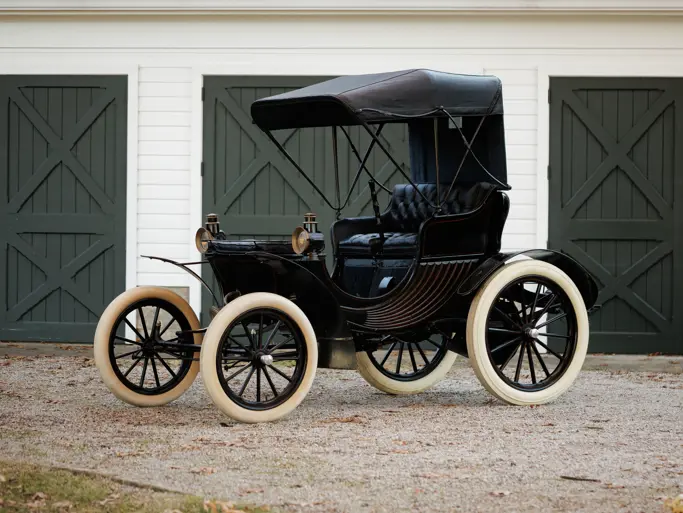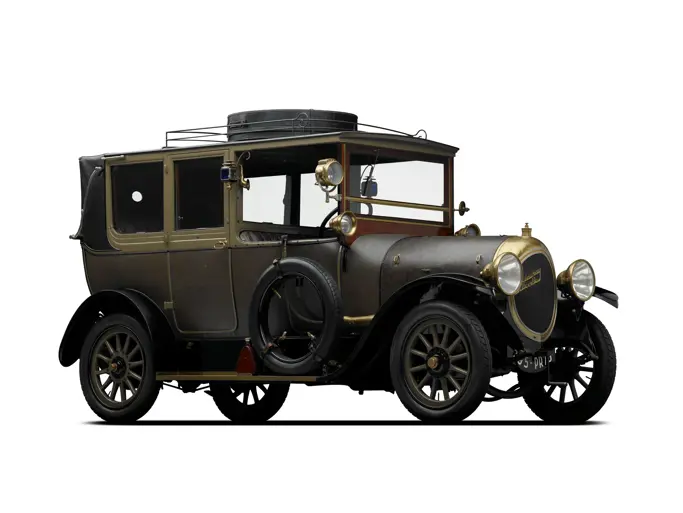30 rated-hp, 286.3 cu. in. T-head four-cylinder engine, four-speed manual transmission, solid front axle and live rear axle with semi-elliptic leaf springs, and two-wheel mechanical brakes. Wheelbase: 120 in.
Surely the most famous Locomobile on earth is “Old 16,” the first U.S.-built car to win a race of world renown with its victory in the 1908 Vanderbilt Cup contest on Long Island. It was originally built for the 1906 Vanderbilt race, where it was piloted, as #12, by Joe Tracy. It won the elimination race and had the fastest lap time of any entry, but, in the main race, tire trouble and a muddy course consigned Tracy and the Locomobile to finish 10th. French driver Louis Wagner took the sport’s first checkered flag in a Darracq.
There was no Vanderbilt Cup race in 1907, as a melee broke out in the crowds at the 1906 event, resulting in the death of a spectator. For 1908, race promoter William “Willie K.” Vanderbilt II had completed a private highway, the Long Island Motor Parkway, which provided a safer course for the race and also opened up Long Island to greater development. The two-year-old Locomobile was brought out of retirement and re-numbered as 16. This time George Robertson took the wheel, setting a furious pace and winning the race with a new record average speed of 64.3 mph. Old 16 spent much of its later life with renowned artist Peter Helck, and it is currently in the collection of The Henry Ford in Dearborn, Michigan.
Unlike Stutz and Mercer, whose Bearcats and Raceabouts became legends in their own time, Locomobile never offered a speedster to the public. However, the lore of Old 16 inspired many to create their own, particularly in the 1930s and ’40s, when cars with derelict bodywork were fairly plentiful. Faced with fabricating new wood for a limousine or touring car, many an enthusiast opted for a pair of bucket seats and a round fuel tank instead, with the wind in one’s face being a free accessory.
This car has been known in the hobby for some 60 years. It bears a Second Prize brass plaque on the dashboard, from the 50th anniversary celebration of that famous 1908 Vanderbilt race, which was held on October 25, 1958, at Old Westbury, Long Island. Photos taken around that time show it in its current configuration. It is not known who did the skillful and sympathetic speedster conversion, but it owes much to the Bearcat and Raceabout meme, as it has a monocle windshield, brass lighting, a center-mounted Rushmore spotlight, gas headlights, and kerosene side-lamps. The leather upholstery is removable and in excellent order. A Warner Auto Meter odometer-speedometer combination is fitted to the dashboard, which also carries a Warner Chelsea clock with a second hand, and the ignition is of a Bosch dual-coil system.
The chassis is original and highly correct. Even the original muffler is in place and in good order. It rides on Firestone Non-Skid tires, with dual spares at the rear. The car has recently been detailed, with its bright brass giving a visual highlight to the dark blue paint, which is accented with white pinstriping.
In the owner’s words, “It is unusual to find a speedster on such a high-quality chassis with a long-established history.” This car, which is eligible for vintage racing and vintage touring, will turn eyes on any highway and provide an immense helping of fun. It is, as the early company slogan boasted, “Easily the best-built car in America.”

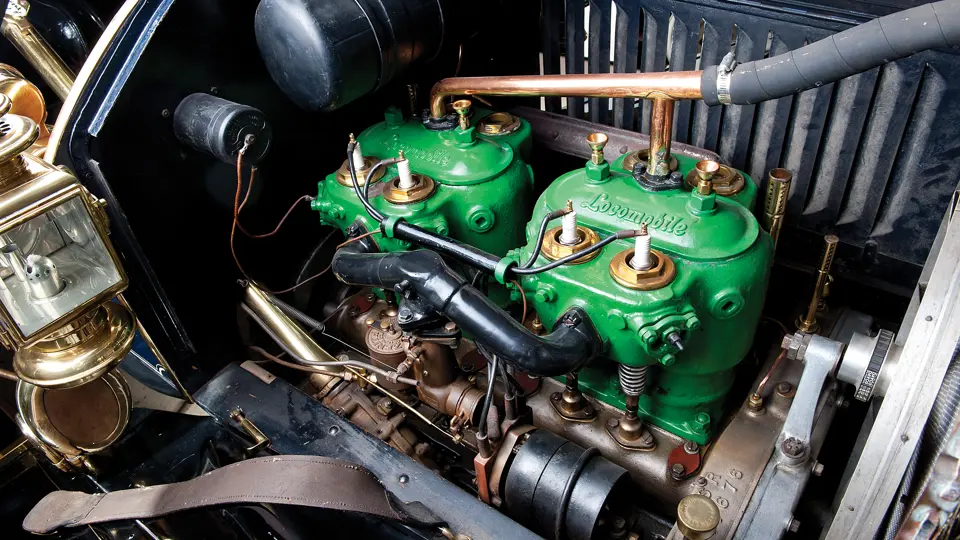


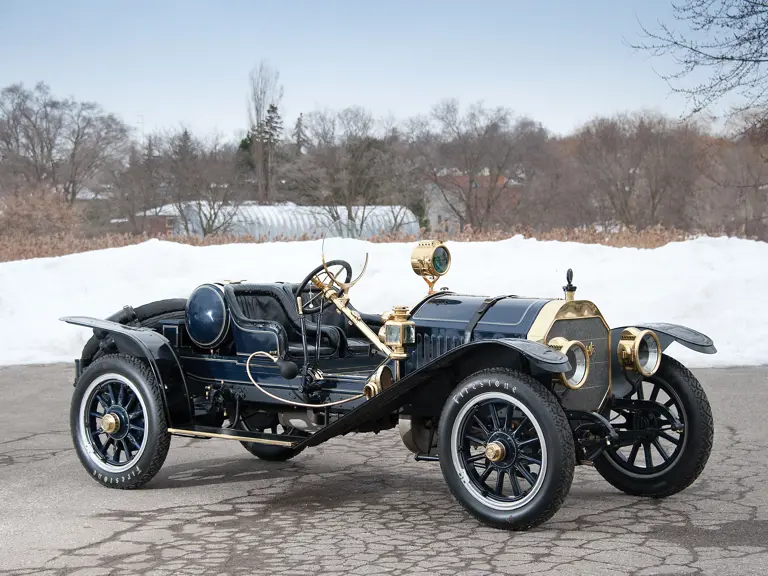
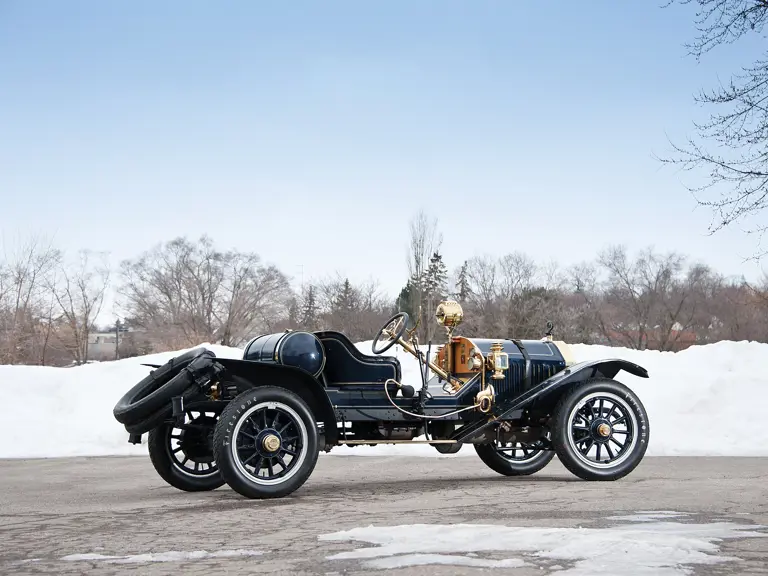

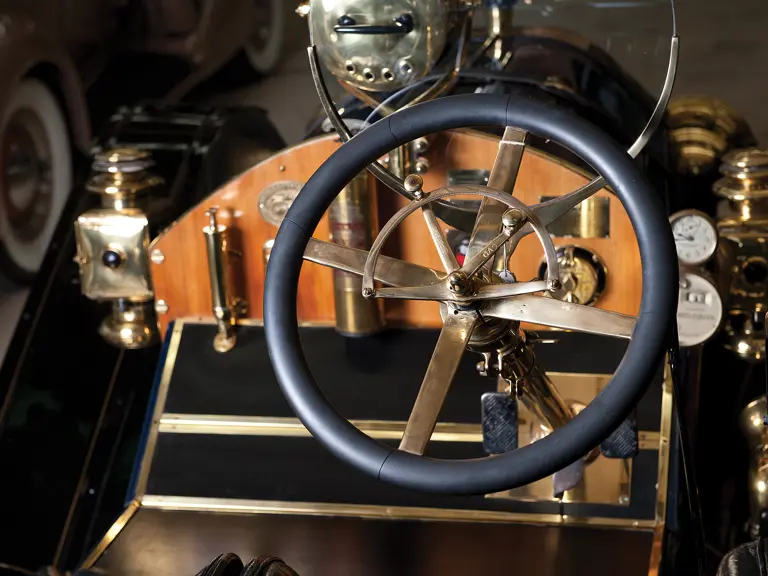

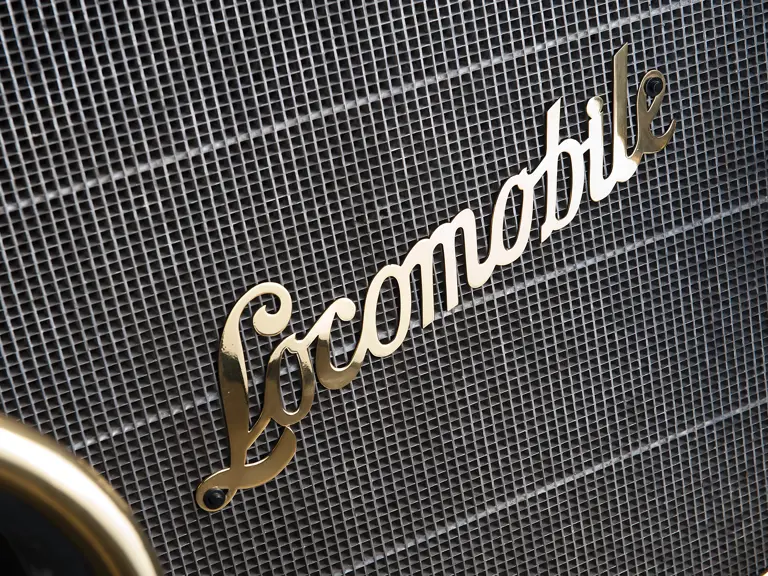
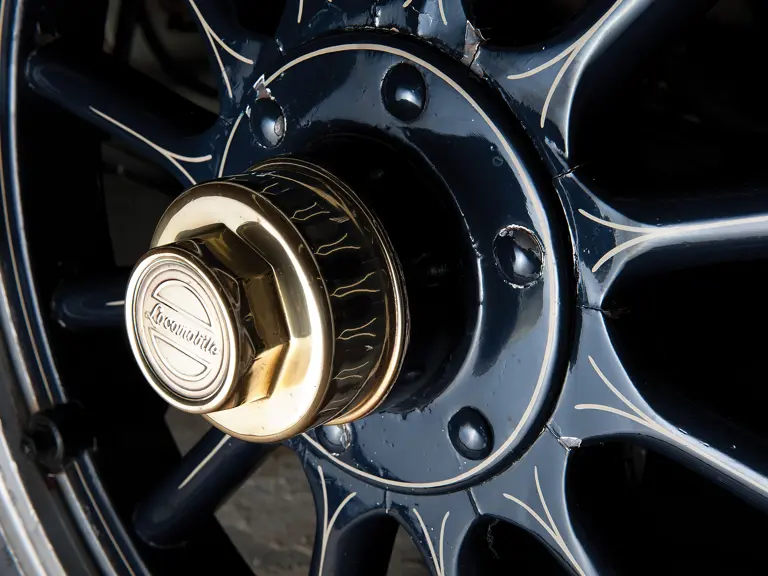
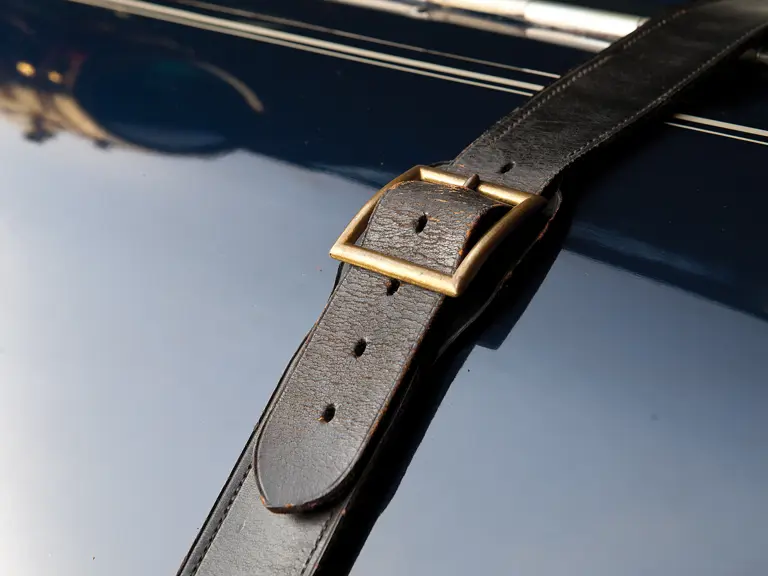
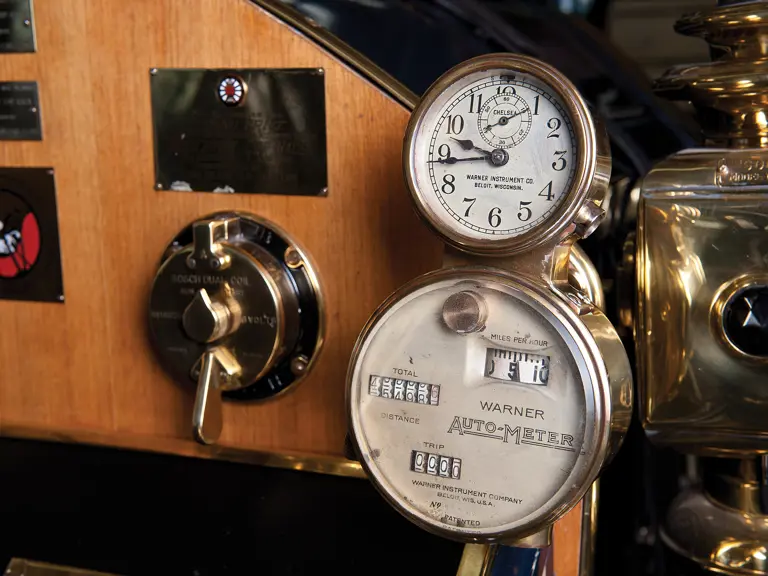
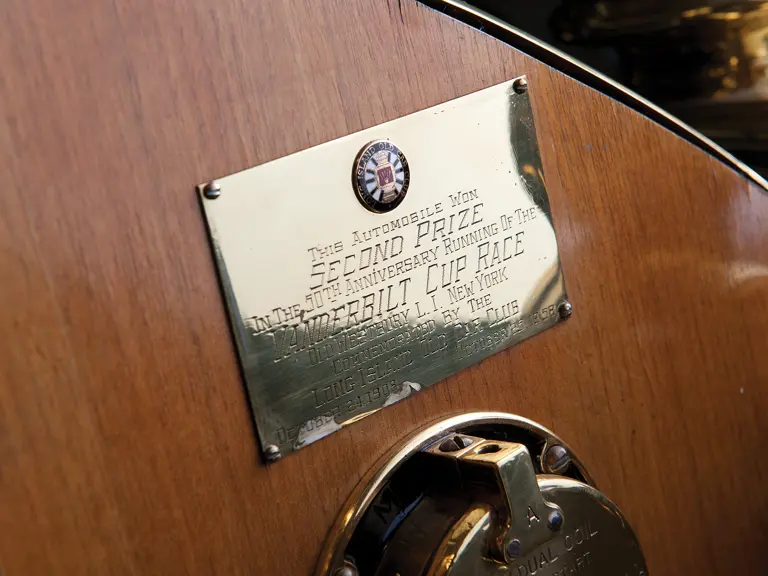
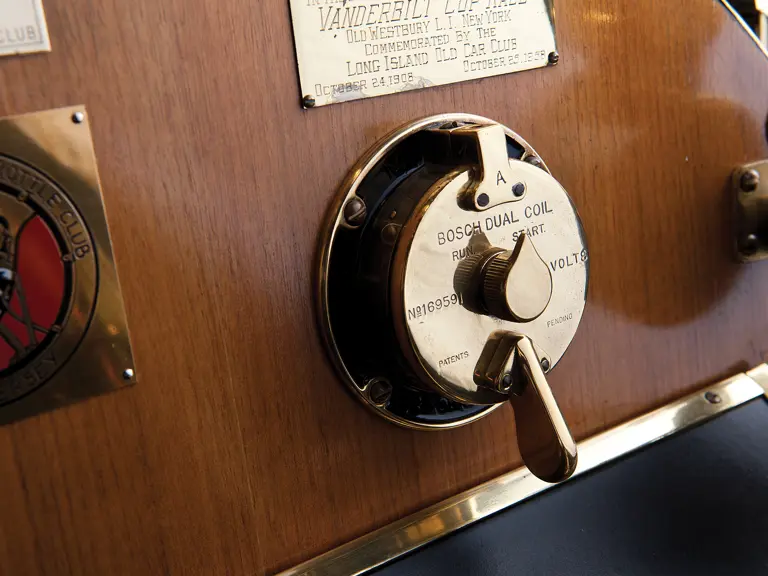

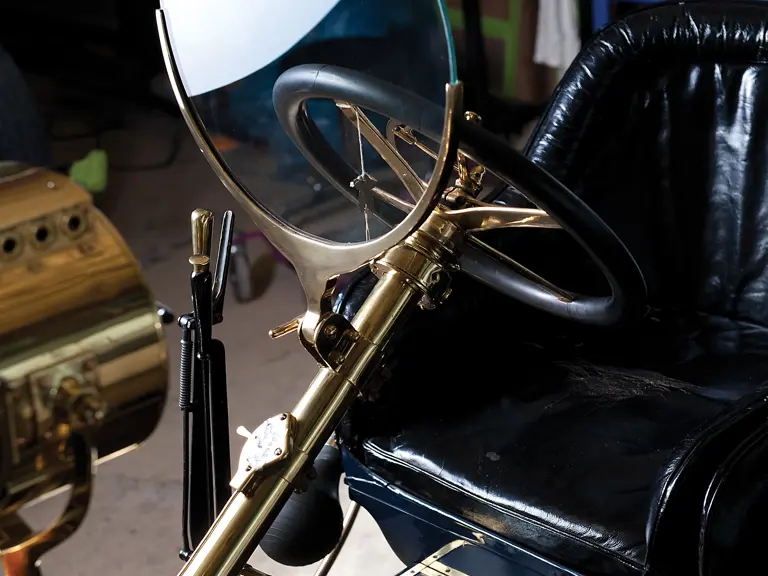
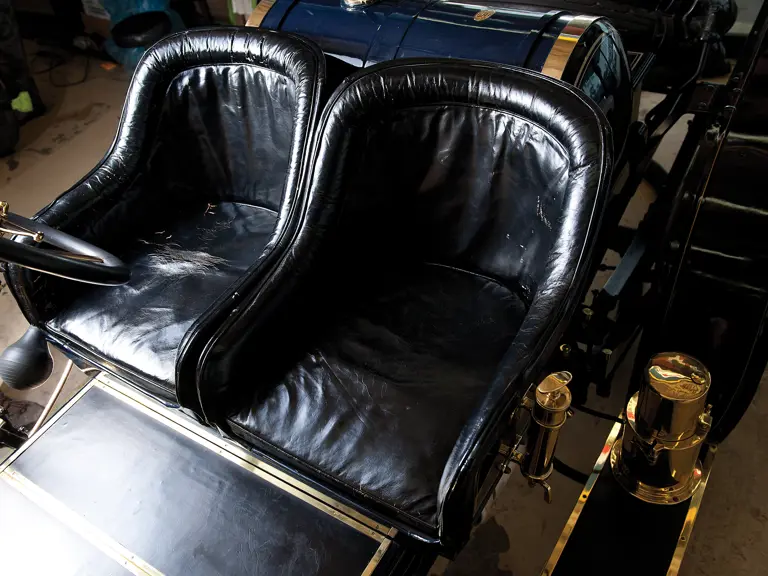
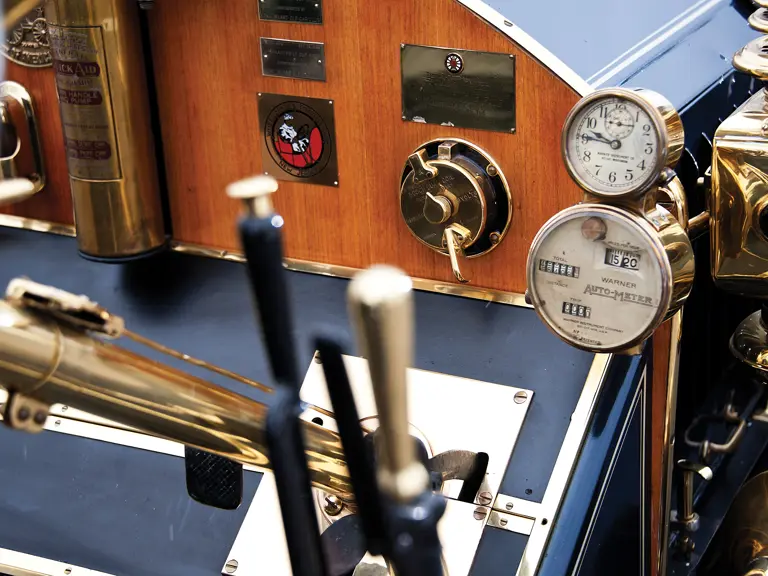
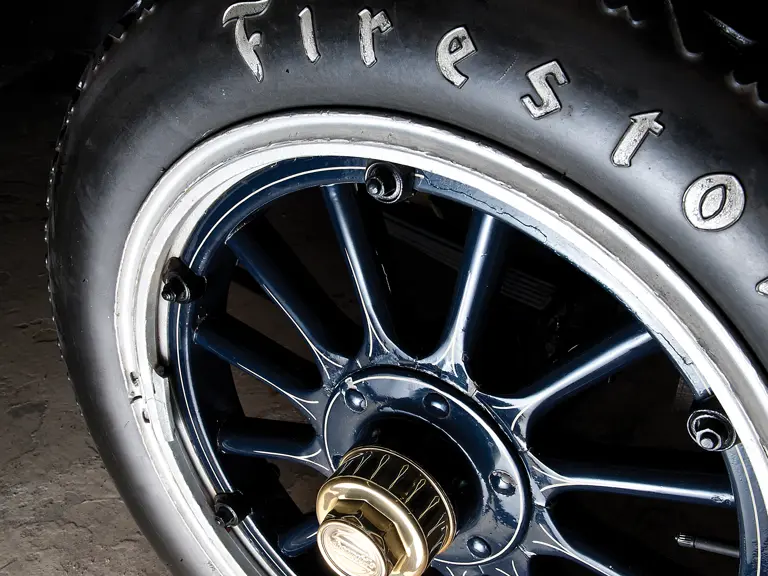
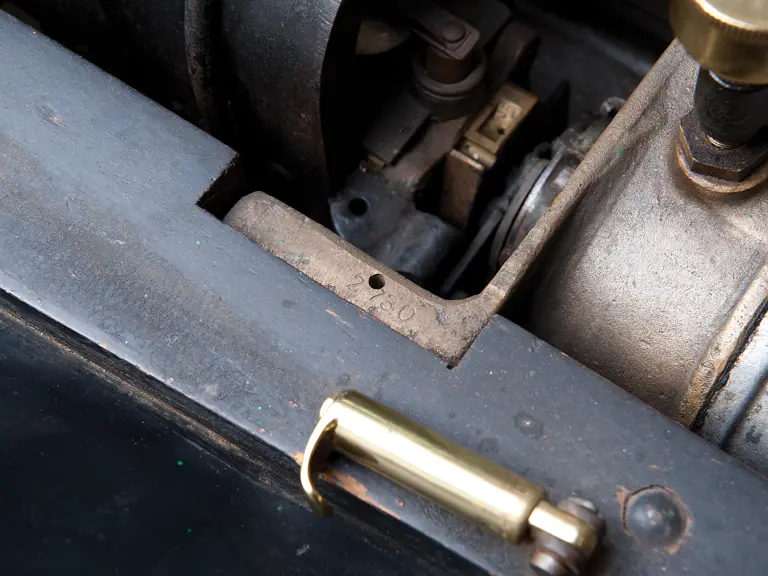
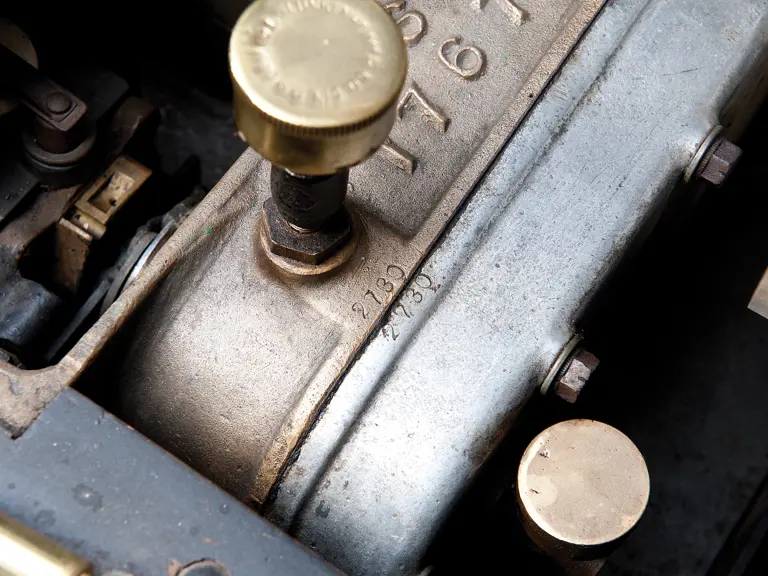

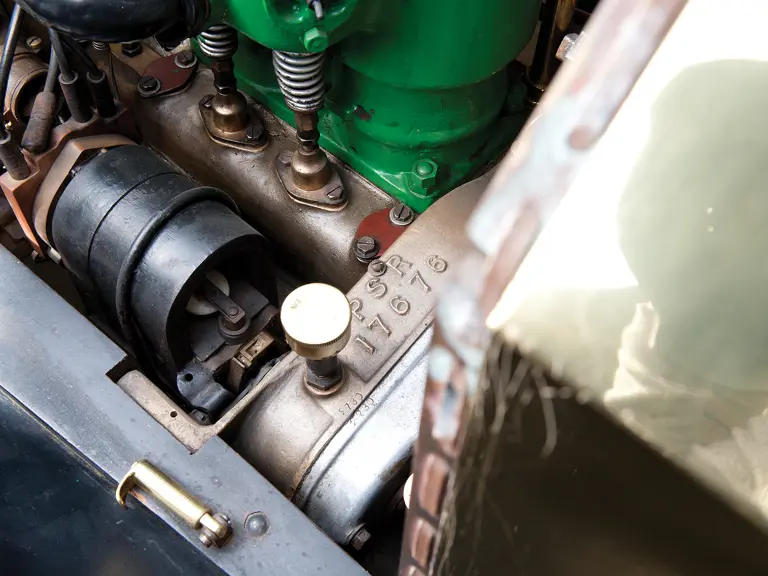
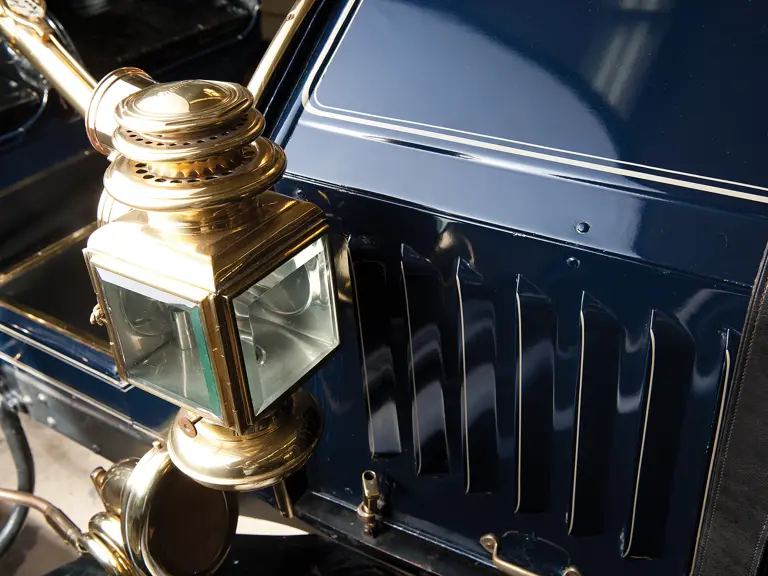
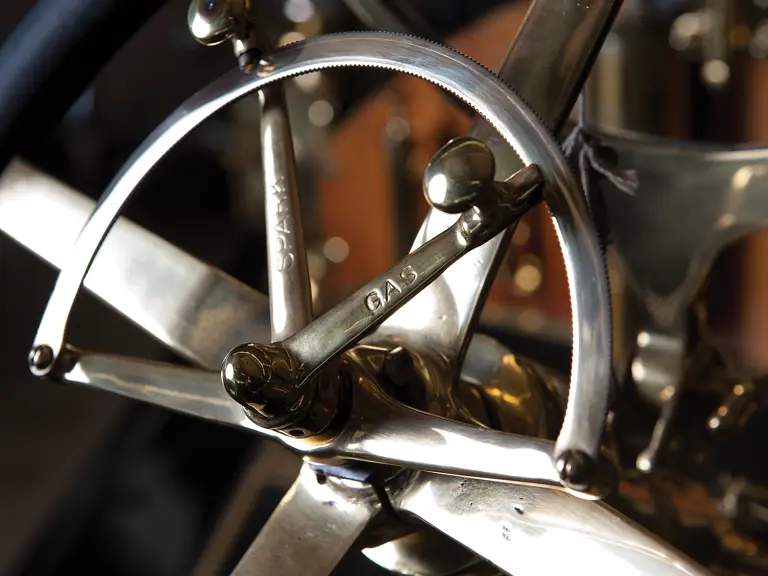
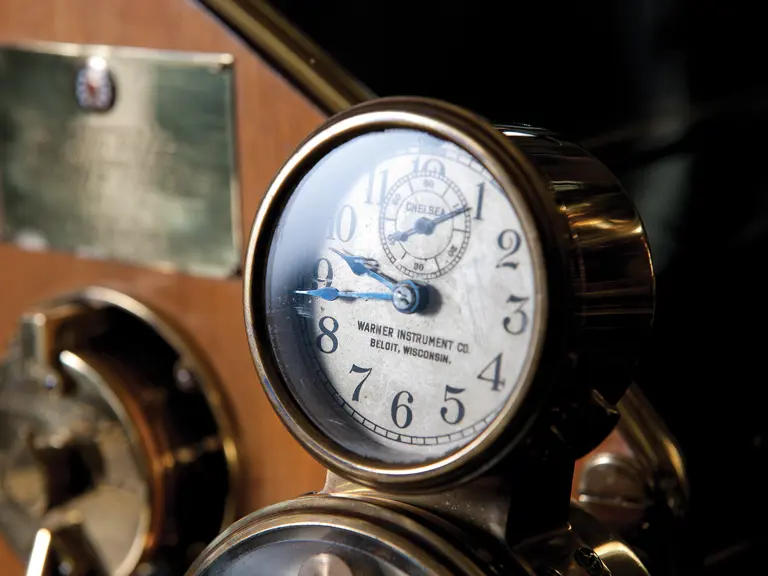


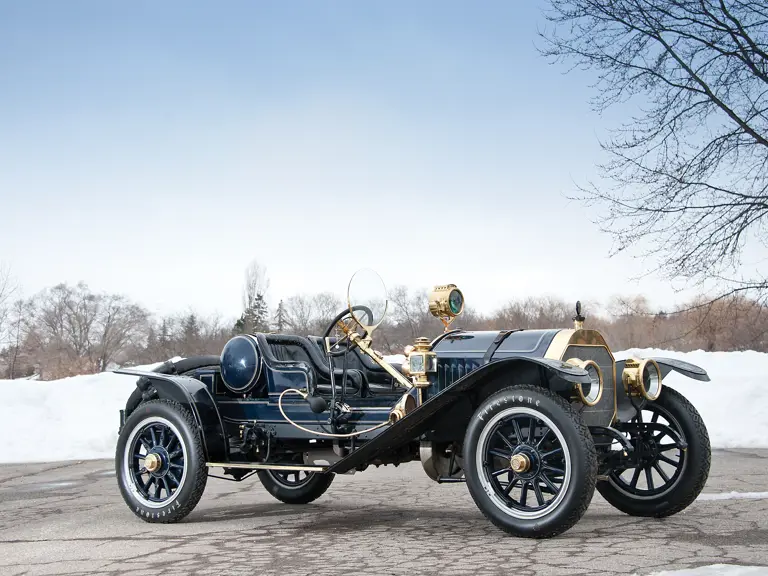
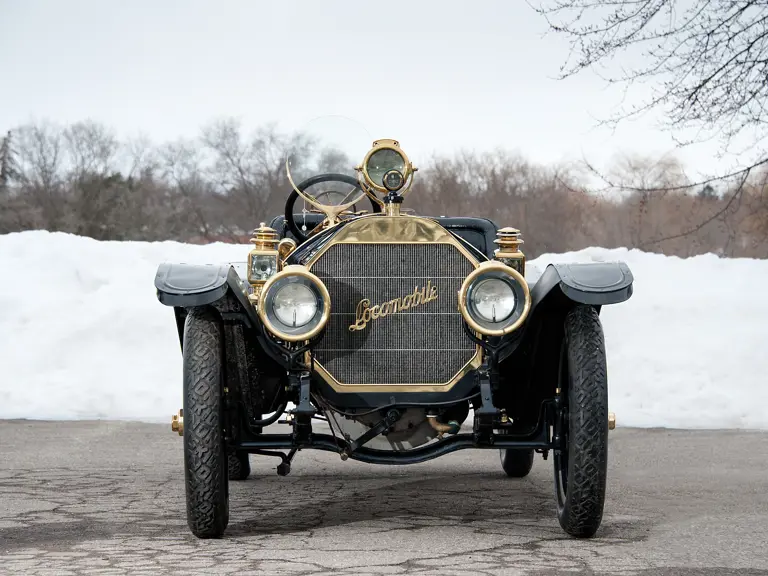
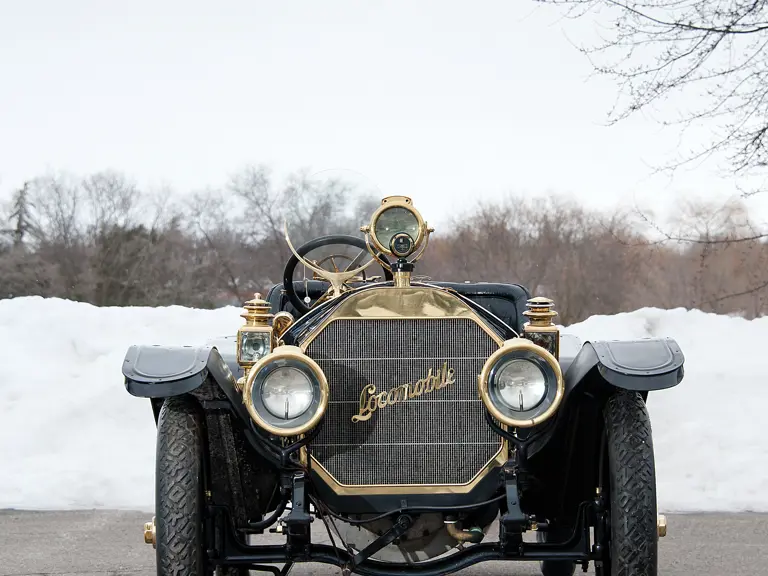



 | Amelia Island, Florida
| Amelia Island, Florida
